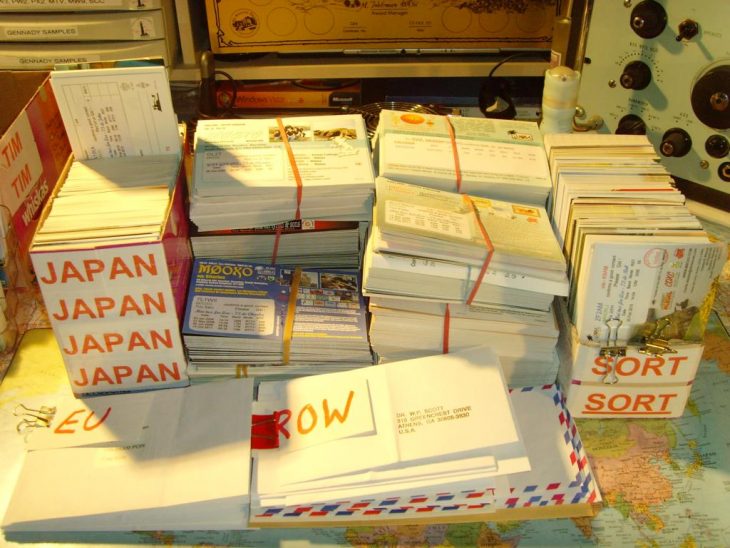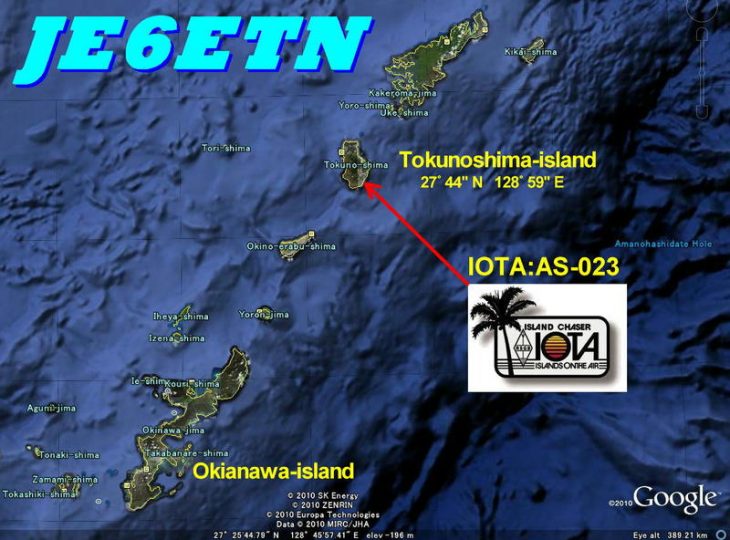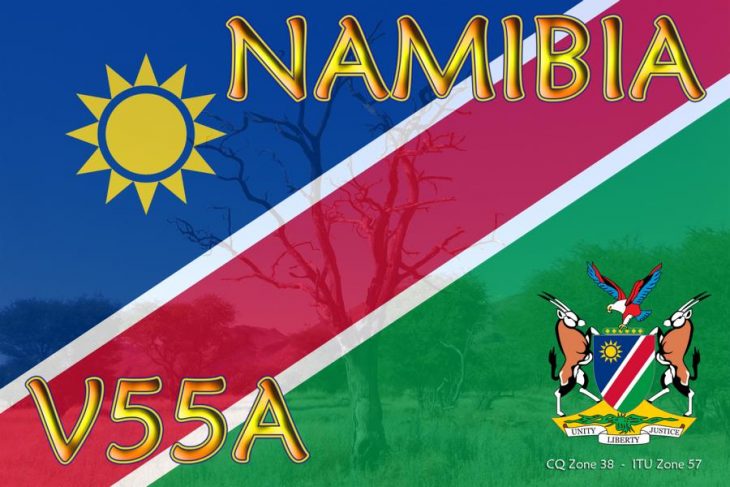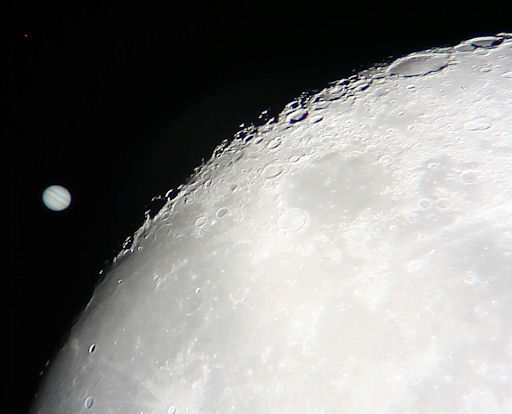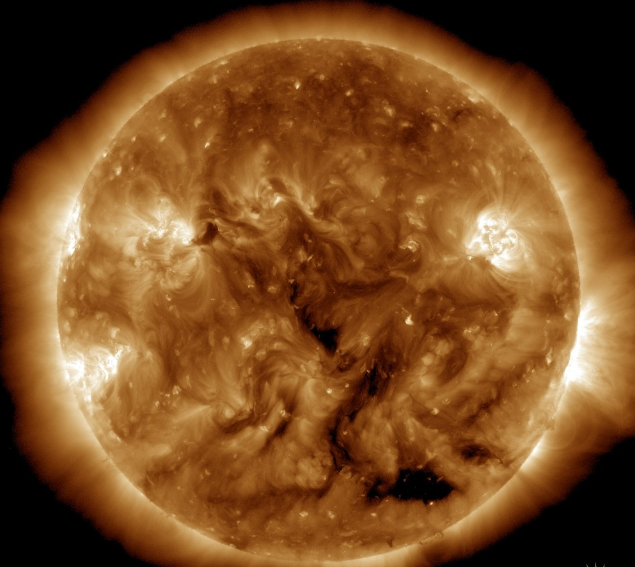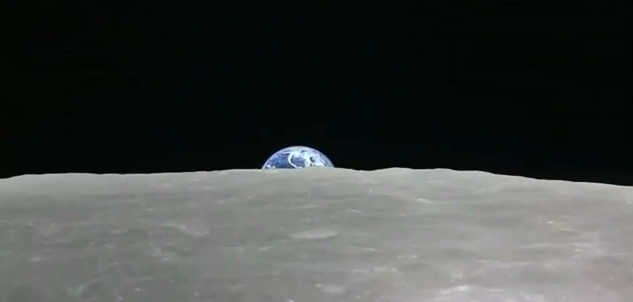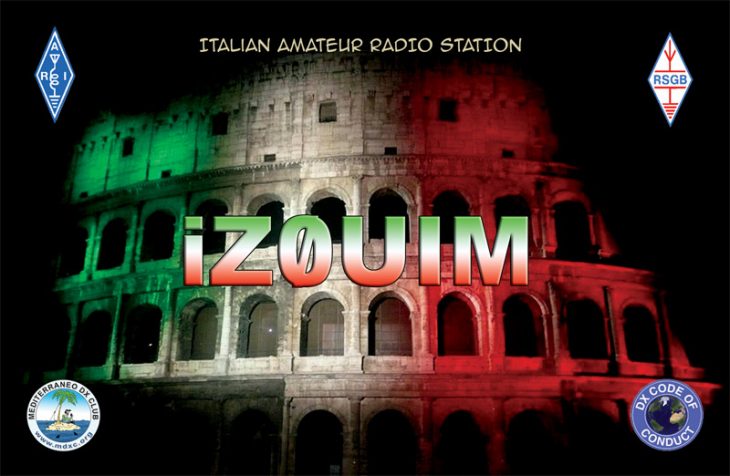NOAA and USAF are predicting the 10.7 centimeter solar flux numbers at 115 for December 21-24, 120 on December 25-27, 100 on December 28-29, 95 on December 30-January 3, 100 on January 4, 105 on January 5-7, 110 and 115 on January 8-9, 120 on January 10-12, and peaking at 125 on January 13-14. The prediction shows flux values dropping below 100 on January 26-30, and then rising above 100 in February. We see planetary A index at 5 on December 21-22, 8 on December 23-24, 5 on December 25-28, 8 on December 29, then 5 on December 30-January 12. There is a big jump to 16 and 12 on January 13-14, then dropping back to 5 again into February.
Tom Morton, CXC7TT, from Rocha, Uruguay, writes about the ARRL 10 Meter Contest (December 8-9, 2012):“Due to house guests, I did not participate in contest, except for roughly 30 contacts. I turned the rig on right at 0000 on Friday night and 10 meters was pretty much dead (that’s 2200 local). I did hear and work XV1X (Vietnam) at 0001 beaming long-path over the southwestern tip of the US, so the band had gone really long. Vietnam is about 12,000 miles from here via long-path. The next morning, typically good for Europe, was pretty dead. The few big guns in Europe were coming through, but not with really big signals. FH8PL at 1217 on SSB and T6LG at 1218 on CW were pretty easy to work. The next day, A45XR at 1600 on 10 meters CW was another easy catch. Around 1400 on Sunday, the band really opened up to the US. My rig had signals from 28.001 MHz that finally tapered off around 28.091 MHz, and SSB was crowded from 28.300-28.553 MHz. It was definitely a South American day, as two local multi-single stations were running big time. CW5W and CX5BW were within 200 contacts of each other by mid-afternoon on Sunday. I think Jorge and his crew, CW5W, may have the top score with more than 3200 contacts.”
Peter Matsunaga, WH6EAU — who operates from the South Coast of Oahu with 50 W into an end-fed wire — also had 10 Meter Contest comments: “From a limited time working during the contest period, propagation seemed better on Saturday than it did on Sunday. On both days, I could work only one US station, in Texas. My location seems to be in a dead spot for much of Continental United states, due to a nearby mountain mass. Otherwise I could work Southern Brazil, Uruguay, Chile, Argentina and Australia on Saturday, and Japan on Sunday. The signal strength to Australia was particularly strong at times.”
Kevin Seeger, NC6V, of Corona, California, also wrote about the 10 Meter Contest, “I noticed that the band just kept going dead from time to time. I checked my antenna and coax a few times to see if they were still there. E-skip openings were very, very rare to almost nonexistent. The strangest propagation was a severe echo on Sunday; I was hearing from stations on CW located in Ohio and Pennsylvania. At times it was so bad I couldn’t copy their calls. I worked most states east of the Mississippi, but I missed the whole W7 call area and a big part of the W0 call area. I worked several Japanese stations on Sunday afternoon, and working into South America was a breeze.”
Gerald Fasse, W8GF, of Warren, Michigan wrote: “Among the toughest DX paths from Southeast Michigan is to Cambodia (regular path heading 350 degrees, and 14,000 kilometers.). My only need was — and still is 30 meters. Many 30 meter spots were noted on the DX cluster, coupled with frantic dial spinning, but no copy here. But I did manage to make a single 20 meter CW contact at 1830 on December 14. Checking for openings to the Southeast Michigan area, I saw that possible openings occur between 1600 and 1900 for that date. The point being that XU1A called again and again that day with few contacts noted, probably because mid-day openings to Southeast Asia are not expected. Don’t always depend on the DX cluster for rare and unusual DX info. Tune your radio!”
All times listed are UTC, unless otherwise noted.
Amateur solar observer Tad Cook, K7RA, of Seattle, Washington, provides this weekly report on solar conditions and propagation. This report also is available via W1AW every Friday, and an abbreviated version appears each Thursday in The ARRL Letter. You can find a guide to articles and programs concerning propagation here. Check here and here for a detailed explanation of the numbers used in this bulletin. An archive of past propagation bulletins can be found here. You can find monthly propagation charts between four USA regions and 12 overseas locations here. Readers may contact the author via e-mail.


